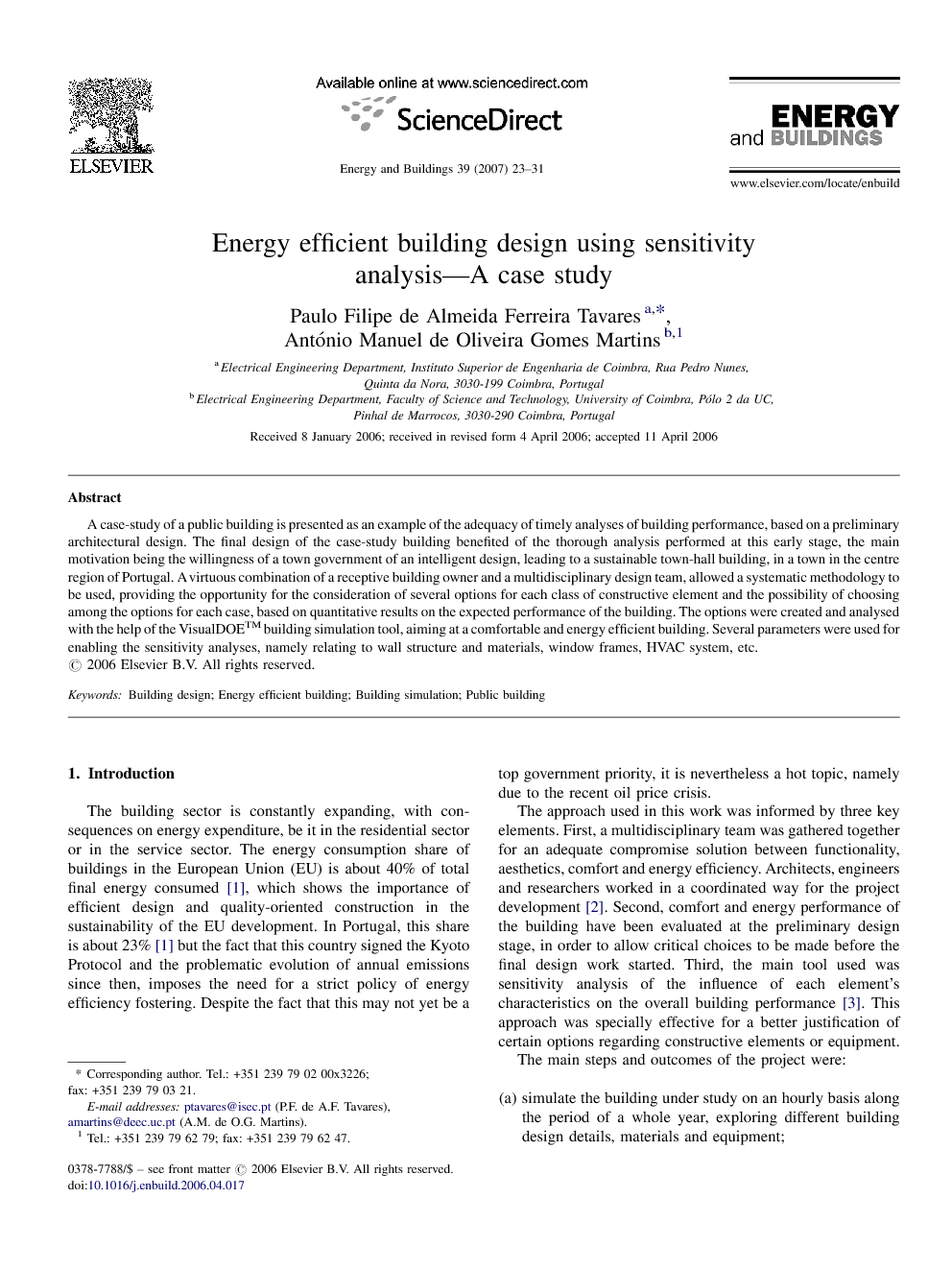ترجمه فارسی عنوان مقاله
انرژی کارآمد طراحی ساختمان با استفاده از تجزیه و تحلیل حساسیت؛ مطالعه موردی
عنوان انگلیسی
Energy efficient building design using sensitivity analysis—A case study
| کد مقاله | سال انتشار | تعداد صفحات مقاله انگلیسی |
|---|---|---|
| 25903 | 2007 | 9 صفحه PDF |
منبع

Publisher : Elsevier - Science Direct (الزویر - ساینس دایرکت)
Journal : Energy and Buildings, Volume 39, Issue 1, January 2007, Pages 23–31
ترجمه کلمات کلیدی
ساخت و طراحی -
انرژی کارآمد ساختمان -
ساخت و شبیه سازی -
ساختمان عمومی -
کلمات کلیدی انگلیسی
Building design,
Energy efficient building,
Building simulation,
Public building,

